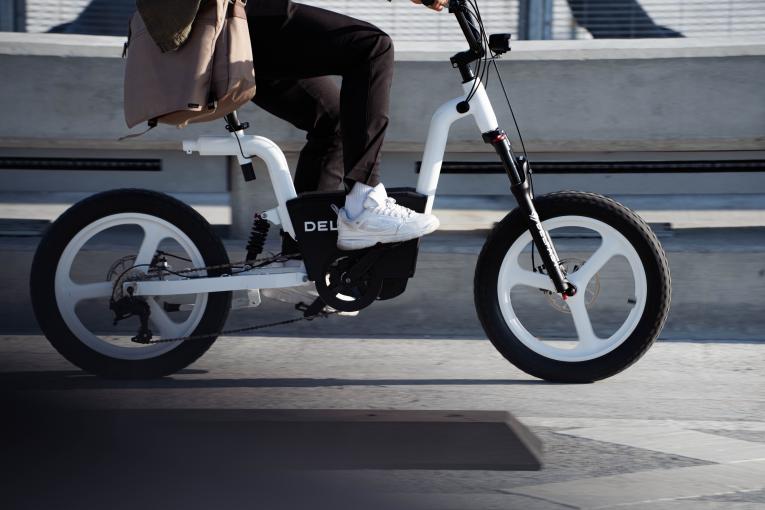
The battery is the most crucial part of your eBike as so many other components rely on it to operate properly. Without it many of the functions you rely on would simply not work. It is also a large piece of the overall price of the eBike, so it is vital to learn proper care, storage, riding and charging habits so the battery lasts for years to come.
Most modern eBikes run on Li-ion batteries due to their high energy-to-density ratio. The Delfast Top 3.0i has a large capacity 72V Li-ion battery that helps it reach a record-breaking range of over 200 miles on a single charge. Battery sizes and capacities will vary based on how many functions they are powering and the range the manufacturer is aiming for. Here’s a very basic explanation of what’s inside a Li-ion battery.
There are two electrodes: the anode (negative) and the cathode (positive) which store lithium ions. A separator between these two electrodes so they don’t mix. An electrolyte that acts as a conductor for the energy to travel between the two electrodes. These are put together in very specific layers and quantities to make sure there is no unwanted mixing of materials and for proper conductivity. While it may seem basic these layers are located inside the cells that when wired together make up the entire battery. A Tesla battery that has a range of 250-500 miles will have over 4,000 cylindrical cells all wired together inside the battery. A phone battery will usually have these layers inside a flat pack. Batteries will have different amounts of each material (or different materials for the same function) based on their purpose and design. Li-ion batteries are essential all the same basic layered design in differently shaped vessels.
Extreme temperatures can create issues for a battery when it comes to storage, charging, and riding. Hot temperatures can be especially dangerous if the battery pack itself gets too hot and has no room for expansion. Both hot and cold temperatures can reduce battery capacity and the overall number of charge cycles that can be performed. Let’s look at some basic strategies for electric bike battery use during summer:
Knowing and applying basic battery care with storage, charging, and riding is important for several reasons. It will ensure your battery lasts a long time and is functioning as it should. It will help you ensure the battery is ready when you need it. Caring properly for your battery will help to make sure you are safe from overheating and failure.
Safe temperatures for battery charging are between 41F and 113F, with optimal temperatures in the middle zone. The further away from this middle point means a decrease in future capacity. Charging below and above these temperatures can damage the battery and catastrophic failure is more likely.
Riding in conditions around 68F will give the longest single charge range from your eBike battery. Riding in temperatures well above and below can have severe impacts on the life and performance of your battery. We recommend that choice when you ride, how long you ride, and how much you demand of your eBike be based on temperature and weather conditions.
Adjusting your battery storage conditions will keep your battery in better overall health. If you don’t have room to store the eBike inside we suggest removing the battery and storing it in a cool, dry location. Contact points can corrode if stored in a damp environment. Using a non-conductive grease to protect the battery terminals will help extend their life.
Make sure to store your battery between 30% and 70% of a full charge. The optimum storage percentage is 40%. Storing your battery higher or lower can result in a loss of capacity.
Varying the percentages at which you charge your battery will help protect your battery’s life and performance. We recommend a 30/60 charging scheme. Rotate between charging your battery from 30% to full, and then 60% to full. Doing so will allow for proper discharge and charge of your battery, at an optimal rhythm that will help protect your battery health.
Lastly, do everything you can to prevent overcharging your electric bike battery. Don’t leave your battery charging while unattended. We recommend setting an alarm every time you charge your battery or buying a simple plug timer that will turn off after the time expires. Smart plugs are good options as you can set specific times for them to shut off power straight from your connected device.
With a little extra care, you can ensure that your eBike battery stays in optimum health, and is ready for you whenever you need it. Following these simple rules will give you peace of mind knowing you’re protecting your investment, keeping you and your loved ones safe, and are as ready to hit the road or trail as your eBike is.